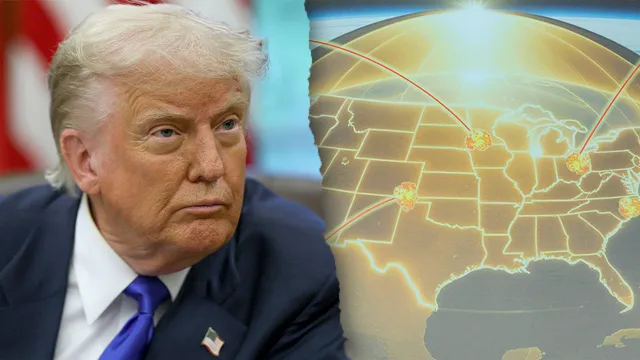
Trump announces $500 billion golden dome missile defense program
2025-05-22 01:16- The Golden Dome missile defense program aims to counter long-range missile threats from countries like North Korea and Russia.
- President Trump indicated the projected cost for the program could reach over $500 billion.
- The program will represent a significant shift in U.S. military strategy, as it marks the first deployment of weapons in space.
Express your sentiment!
Insights
On May 19, 2025, President Donald Trump outlined his vision for a missile defense system called Golden Dome, during an announcement at the White House. The program aims to protect the United States from threats posed by advanced missile capabilities from nations such as North Korea, China, and Russia. The defense project is characterized as a space-based missile defense system, which is expected to cost over $500 billion over a extended period. Trump indicated that the Golden Dome will be the first U.S. military space-based weapons system, marking a significant shift in U.S. defense strategy. The Pentagon has been actively exploring the Golden Dome project and has submitted various options for its development to the White House. The proposals range from small, medium, to large-scale implementations of the missile defense architecture. The administration's choice, which was likely selected in the past few days, aims to integrate satellite technology for tracking and neutralizing missiles. President Trump is expected to push for Congress to secure initial funding for the project alongside his proposed tax break legislation. Additionally, a part of the budget earmarked for the Golden Dome includes $25 billion yielded from next year’s defense budget. The complexities involved in the project, described by officials as needing a “Manhattan Project-scale effort,” highlight the large-scale network of collaboration required to realize the Golden Dome vision. This would involve multiple government agencies, private contractors, and significant research and development investments to create a functional system capable of intercepting missiles during various stages of their flight paths. Companies including SpaceX, under the leadership of Elon Musk, have expressed interest in participating in the project with proposals centered around the development and launch of a satellite constellation for missile tracking and defense. Despite the ambitious nature of the project, there remains skepticism regarding its feasibility and the financial burden it could place on taxpayers. Military and defense experts note that comparable projects have historically faced challenges in operational effectiveness and procurement processes. As policymakers weigh the future of the Golden Dome missile defense strategy, the urgency of responses to the evolving threats from adversarial missile technology grows, creating pressure on government officials to accelerate the project's development.
Contexts
The Golden Dome missile defense program represents a critical advancement in national security and defense technology. Developed initially by the Israeli defense industry, this system was designed to intercept and destroy short-range threats, such as incoming rockets and artillery shells. Its introduction has significantly improved Israel's defense capabilities, particularly in the context of the ongoing regional conflicts and the security threats posed by various militant groups. The system is composed of radar detection technologies and missile interception systems that work together to assess and neutralize threats in real time, ensuring the safety of civilian populations in high-risk areas. The effectiveness of the Golden Dome program can be attributed to its advanced technology and strategic deployment within conflict-prone regions. It operates on the principles of rapid response and precision targeting, tracking incoming projectiles and calculating optimal interception paths. The system has demonstrated a high success rate during numerous escalations in hostilities, showcasing its ability to protect urban centers and critical infrastructure from aerial bombardment. This has not only provided immediate safety to civilians but has also contributed to a sense of security that enables societal stability in Israel. Furthermore, the Golden Dome program represents a paradigm shift in missile defense strategies, as it has prompted investments in further technological advancements and collaborations on an international scale. The program has spurred partnerships, particularly with the United States, which provides funding and technical support for the continual enhancement of interception capabilities. This collaboration exemplifies a shared commitment to developing robust defense measures that can address emerging threats, thus influencing global missile defense strategies and international defense policies. In conclusion, the Golden Dome missile defense program is a pivotal element in Israel's security architecture and a vital component of modern defense technology. Its ongoing evolution reflects the adaptive nature of military strategies in response to asymmetric warfare and the need for effective defense systems against evolving ballistic threats. As global security dynamics continue to shift, the insights gained from the Golden Dome project will remain influential, guiding future developments in missile defense technology and strategy.